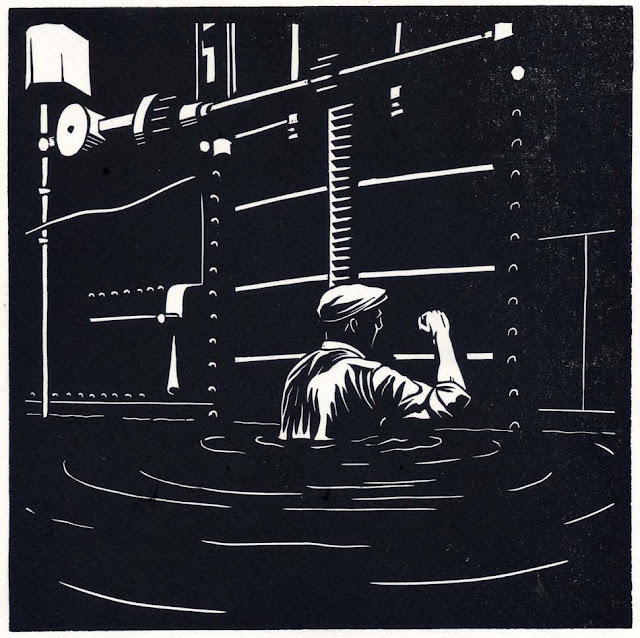As mentioned in a previous post I've been experimenting with a quirky typeface over the last few months. The face first appeared in the 1870's and was digitally redrawn in recent years. The face caught my attention because it appeared on an advert for the Titanic in 1912. More on the history of the face is in that previous post. The complete latest version of the face has been laser cut in 4mm birch ply. It has been illustrated with an abstract horizon which is similar in feel to carnival and circus poster types of the 19th Century. It measures 216 points high / or 18 lines / or 3 inches. Another reason for getting the type made at this stage is that I've been asked to show at an upcoming exhibition called 'Crafting Type' and I intend to show this typeface as a traditional printing form created using contemporary techniques. From the press release: "Dublin’s Grand Canal Dock is soon to be hit with Ireland’s only established creative festival, ‘OFFSET 2012’. To celebrate this bringing together of all things graphic and cutting edge, an exhibition curated by Orlaith Ross entitled ‘Crafting Type’, will cross the craft and design divide by exploring the creations of Ireland’s finest visual elite." This exhibition runs in conjunction with OFFSET, a weekend I've been looking forward to since the last OFFSET two years ago!




















































